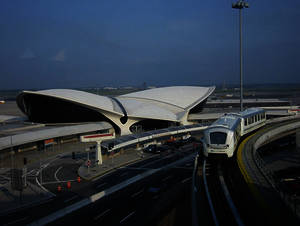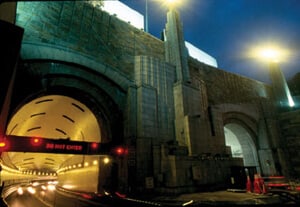JFK Airport – The World’s Largest Packaged Fire Pump System
JFK Airport has a fire pump loop surrounding the airport servicing all hangars and gates which requires the use of 10 fire pumps. Believe it or not, the pre-existing fire pump engines were diesels meant for commercial marine use. They operated at 600 rpm. Most pumps for fire protection spin at 1750 or 3550 rpm. So how did these marine engines running at 600 rpm produce adequate fire protection at that speed? The answer is something that we are not familiar with in fire protection in modern day – gear increasers which converted the engines’ speed of 600 to the pump required speed of 1750 rpm. These behemoth engines were rendered obsolete and no longer necessary when the Port Authority of New York and New Jersey called Callaghan Pump for their recommendations to replace 6 diesel engine powered pumps and 4 electric driven powered pumps. Callaghan Pump recommended 10 horizontal split case pumps: 6 Clarke Diesel Fire Pump Engines (John Deere) and 4 Aurora 500 horse power 4160 volt electric driven. This is the largest packaged fire pump system in the world. (Please contact me via email if you know of a larger packaged fire pump station – – to date, I have not been able to find one but will update my website if I learn that my assessment is incorrect). This system is so powerful that it can fill an Olympic sized swimming pool in 4.2 minutes(770,000 gallons). John P. Picone Inc. contractors handled the installation.















